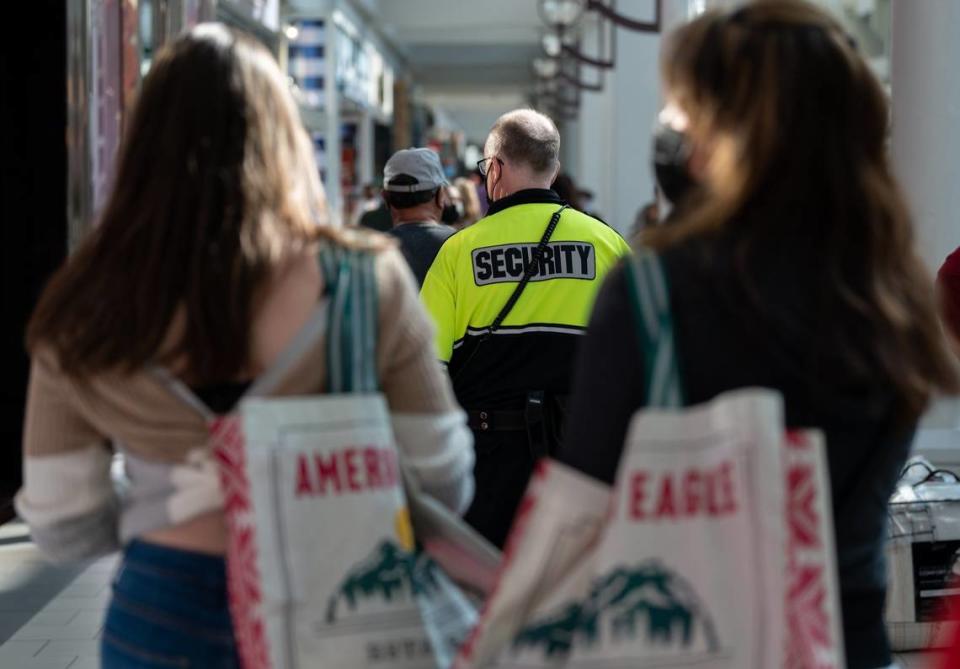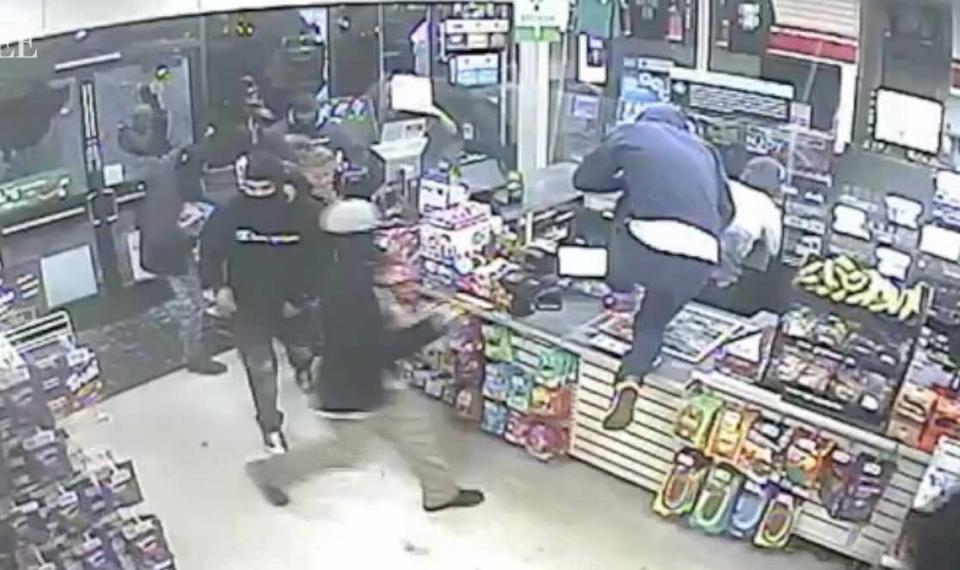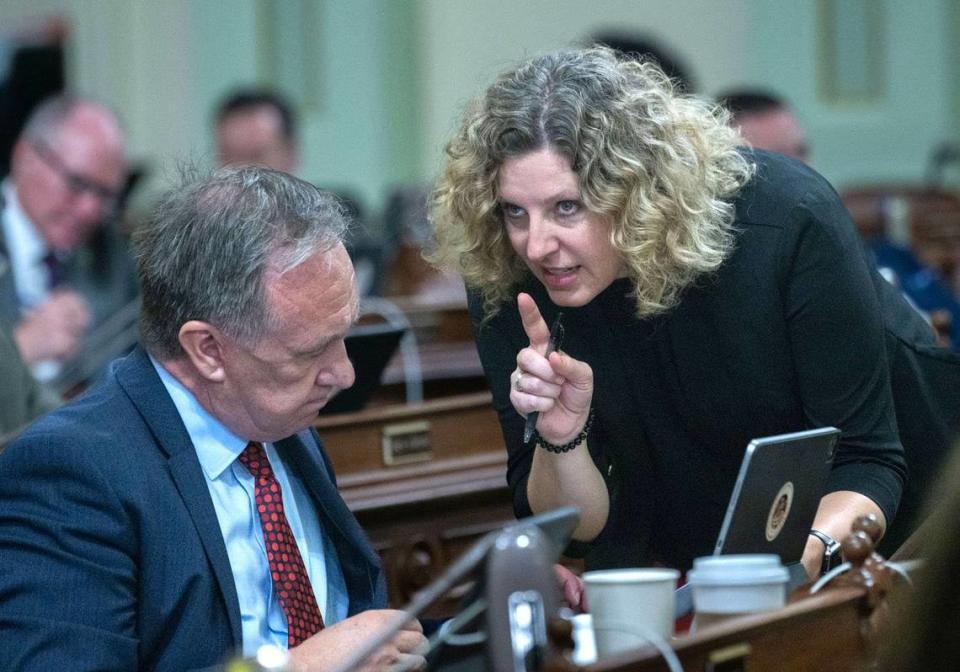California lawmakers want to stop ‘alarming rise’ in retail theft. How big is the problem?
California lawmakers this session want to prioritize strategies to combat retail theft, which shopping chains say is prompting increased security and store closures.
But is the state truly experiencing a significant uptick in retail crime?
The answer is complicated.
Assembly Speaker Robert Rivas, D-Hollister, this fall and winter will convene a Select Committee on Retail Theft to examine an “alarming rise” in shoplifting, organized burglaries and robberies, which he said are “appalling and affect everyone” in a news release.
While some forms of retail theft have increased in California, others have not gone up dramatically. And experts say undoing some of the state’s criminal justice reforms in the name of stopping thieves could prove ineffective or have negative consequences.
“We have to dispense with this simplistic narrative that reforms are what caused the crime and the crime is what causes all of the retail problems that the retail establishments are reporting,” said Charis Kubrin, a professor of Criminology, Law and Society at UC Irvine.
“It’s not to say that crime doesn’t matter. It’s not to say that it’s not a factor, not to say it’s not a piece of the puzzle. It’s just not the entire puzzle.”

California retail crime data
The Public Policy Institute of California in September analyzed 2022 crime data and found shoplifting rates were lower last year than they were in 2019, before the COVID-19 pandemic. However, commercial burglary and robbery rates increased.
In California, commercial burglary occurs when thieves steal more than $950 in store products. Robberies are theft incidents that involve threats or violence. The state defines shoplifting as commercial theft of items with a value that doesn’t exceed $950.
PPIC reported shoplifting in 2022 increased by nearly 29% from the pandemic years, when more people were staying home. But the rate of shoplifting incidents is still 8% lower than it was before the pandemic.
On the other hand, the 2022 commercial burglary rate was up nearly 16% compared to 2019, PPIC’s analysis showed. Although commercial robberies are more rare than burglaries and shoplifting, the state’s 2022 rate increased more than 13% over the 2019 rate.
In recent years, retailers have begun to say widespread theft is hurting them to the point of prompting store closures. Target in September announced it would close nine stores across the country, including three in the Bay Area, due to retail crime.

Dramatic security camera videos showing groups of thieves rushing into stores and making off with large amounts of merchandise have spread on social media and fueled impressions of rampant commercial crime.
Kubrin, the UC Irvine professor, said organized retail theft — in which groups of thieves steal large quantities of items to resell — is a bigger concern than shoplifting, although there is little systematic data on the crime.
“The smash-and-grabs and the commercial burglaries, commercial robberies, that plays a role in what is happening with the shuttering of the Targets and others,” she said. “But I don’t think that is the whole story.”
Kubrin said “other market forces,” such as inflation and rising costs, have slowed consumer spending. The pandemic also changed shopping habits, she said, pushing more people to buy things online, rather than visiting stores.
At least one company has seemingly confirmed Kubrin’s ideas. Walgreens former chief financial officer James Kehoe in January said during an earnings call the company might have overemphasized the amount of theft it claimed its stores were experiencing. This admission came after the retailer announced in October 2021 it was closing five San Francisco stores due to crime.
Retailers call losses “shrink,” which is caused by external theft, employee stealing and systemic errors.
The National Retail Federation’s 2023 National Retail Security Survey showed businesses’ 2022 average shrink rate — calculated as a percentage of sales — was 1.6%, up from 1.4% in 2021, but “in line with shrink rates seen in 2020 and 2019.” The shrink rate was at its lowest in 2017, when it dipped to 1.3%.
Proposition 47 concerns
As concerns over retail theft have increased, some lawmakers have urged changes to Proposition 47, which voters approved in 2014.
The initiative reclassified certain nonviolent crimes as misdemeanors, including commercial thefts under the $950 threshold, which are considered shoplifting. Under Proposition 47, those convicted of shoplifting could be sentenced to in six months in county jail.
Nearly 60% of Californians voted in favor of the measure, which was part of an effort to reform the state’s criminal justice system after harsh sentencing laws from the 1980s and 1990s produced seriously overcrowded prisons.
A panel of federal judges in 2009 ordered California to reduce its prison inmate population, and the U.S. Supreme Court affirmed the decision in 2011.
Some lawmakers have tied Proposition 47 to an increase in retail theft. Several have authored unsuccessful bills to repeal or change the law, in some cases lowering the felony theft threshold to $400.
But Kubrin thinks altering Proposition 47 would be a mistake.
“These organized criminal rings, the smash-and-grabs that are making the news, the commercial robberies that we’re seeing, the commercial burglaries, none of those particular forms of retail theft have anything to do with Prop. 47, by definition,” she said.

Exploring retail theft solutions
Assemblyman Rick Chavez Zbur, D-Hollywood, will chair the Select Committee on Retail Theft, which will have 11 members, including Republicans Vince Fong of Kern County and Juan Alanis of Modesto.
Chavez Zbur said the committee will likely begin holding hearings in November or December, as Rivas wants them to work quickly to develop recommendations for lawmakers early in the year. The full Assembly will meet for its first floor session of 2024 on Jan. 3.
Chavez Zbur echoed Kubrin’s view that organized retail theft is the biggest problem businesses are facing, rather than shoplifting. He said he expects the committee will explore a wide variety of strategies to tackle retail crime, including enforcement and “root causes related to poverty.”
“There are some things that we probably need to focus on in terms of enforcement,” Chavez Zbur said. “We will look at all of the issues, and we’re going to listen to all of the viewpoints, including those from criminal justice reform advocates who argue that increasing penalties doesn’t deter crime.”
Kubrin thinks more attention should be paid to what happens in the aftermath of smash-and-grabs and organized retail theft, when thieves resell products. She suggests targeted strategies to address retail theft at the local level that would help police best work with stores and businesses, because “there’s a lot of variability in these things.”
Kubrin endorses initiatives like a recent state grant program that will award more than $267 million to local law enforcement agencies throughout California to target organized retail theft.
“I think that’s a move in the right direction,” she said. “In other words, it’s a targeted response to a specific problem.”

